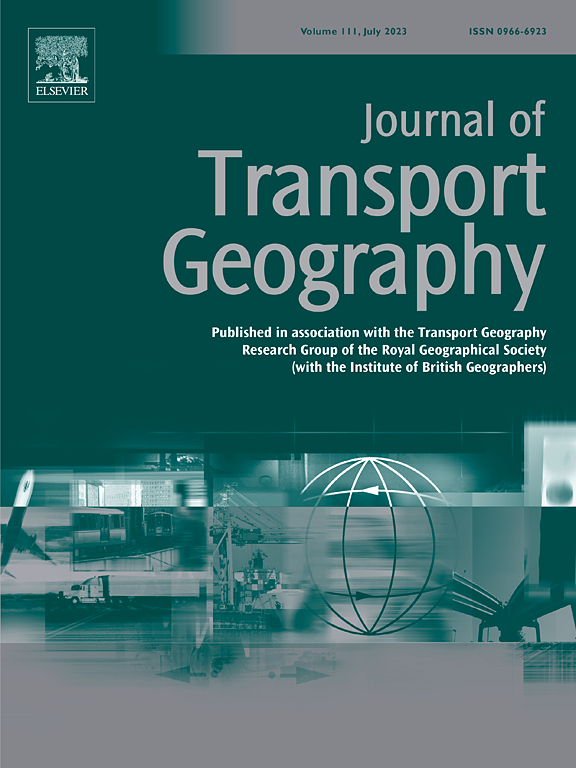Examining spatial patterns and economic interactions of logistics activities across three Texas metropolitan areas
IF 5.7
2区 工程技术
Q1 ECONOMICS
引用次数: 0
Abstract
This study examines the spatial dynamics of warehouse location choice and the interplay between e-commerce, logistics businesses, and supply chain entities in three major urban areas in Texas: Houston, Austin, and Dallas-Fort Worth. We investigate the key factors influencing warehouse selection while accounting for spatial spillover effects (i.e., co-locational relationships), using data from 2003 to 2016. A major finding is that different types of business establishments exert distinct influences on warehouse location choice, varying across spatial scales. Notably, the effects from neighboring spatial units sometimes diverge from the direct impacts. For instance, manufacturing establishments have a positive direct influence on warehouse location choice in all three study areas, while neighboring manufacturing units show negative effects in Austin and Dallas. The analysis also highlights that when spatial interactions among e-commerce facilities, logistics businesses, and supply chain entities in adjacent units are accounted for, several transportation infrastructure and socioeconomic factors lose their statistical significance. The results provide valuable insights for policymakers, industry practitioners, and urban planners for informed warehousing facility allocation and development decisions in Texas metropolitan areas.
考察得克萨斯州三个大都市区物流活动的空间模式和经济互动关系
本研究考察了德克萨斯州休斯顿、奥斯汀和达拉斯-沃斯堡三个主要城市地区的仓储区位选择的空间动态,以及电子商务、物流企业和供应链实体之间的相互作用。本文利用2003年至2016年的数据,在考虑空间溢出效应(即共址关系)的情况下,研究了影响仓库选择的关键因素。主要发现是不同类型的商业机构对仓库选址的影响不同,在不同的空间尺度上存在差异。值得注意的是,邻近空间单元的影响有时会偏离直接影响。例如,在所有三个研究区域中,制造企业对仓库选址有直接的积极影响,而邻近的制造企业在奥斯汀和达拉斯则表现出负面影响。分析还强调,当考虑到相邻单元中电子商务设施、物流企业和供应链实体之间的空间相互作用时,一些交通基础设施和社会经济因素失去了统计意义。研究结果为决策者、行业从业者和城市规划者提供了有价值的见解,为德克萨斯州大都市地区的仓储设施配置和发展决策提供了依据。
本文章由计算机程序翻译,如有差异,请以英文原文为准。
求助全文
约1分钟内获得全文
求助全文
来源期刊

Journal of Transport Geography
Multiple-
CiteScore
11.50
自引率
11.50%
发文量
197
期刊介绍:
A major resurgence has occurred in transport geography in the wake of political and policy changes, huge transport infrastructure projects and responses to urban traffic congestion. The Journal of Transport Geography provides a central focus for developments in this rapidly expanding sub-discipline.
 求助内容:
求助内容: 应助结果提醒方式:
应助结果提醒方式:


